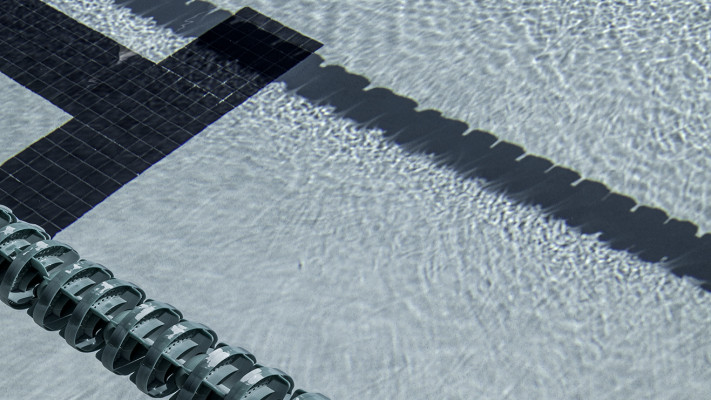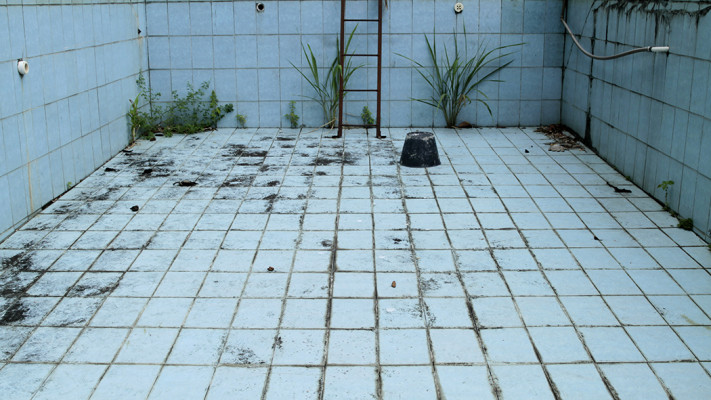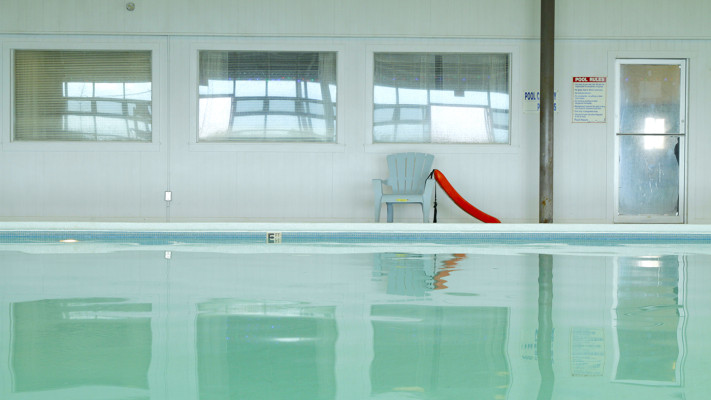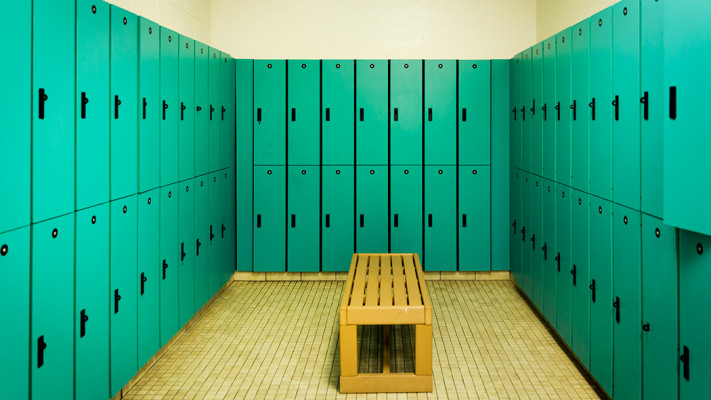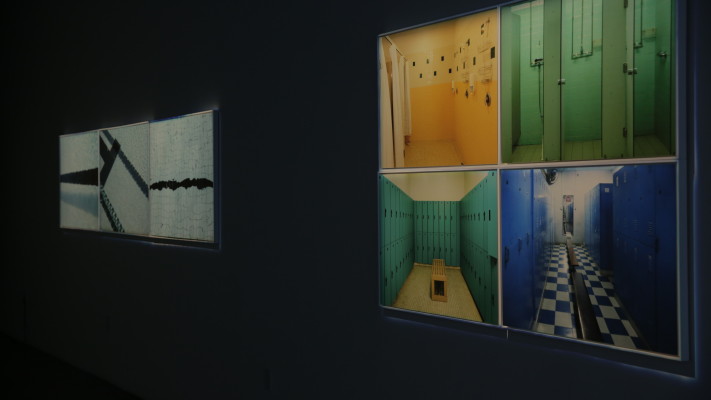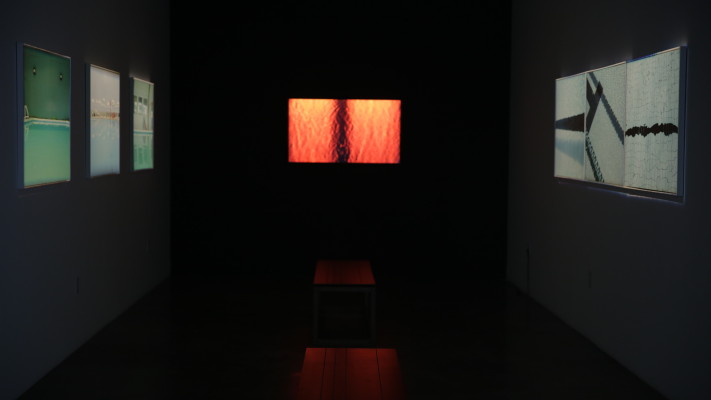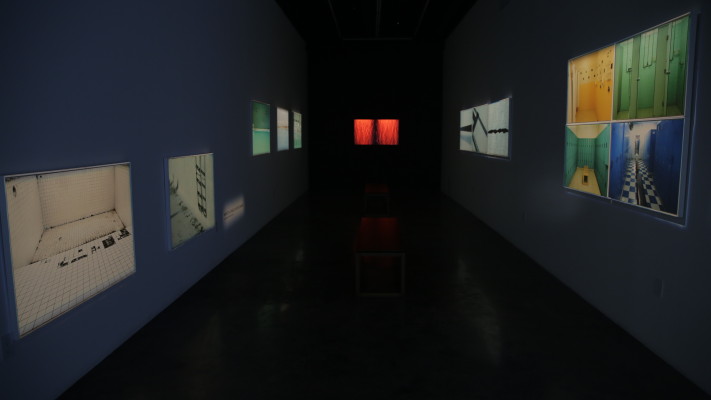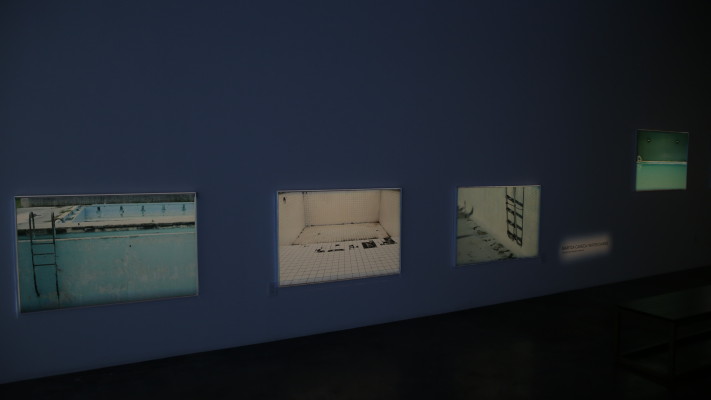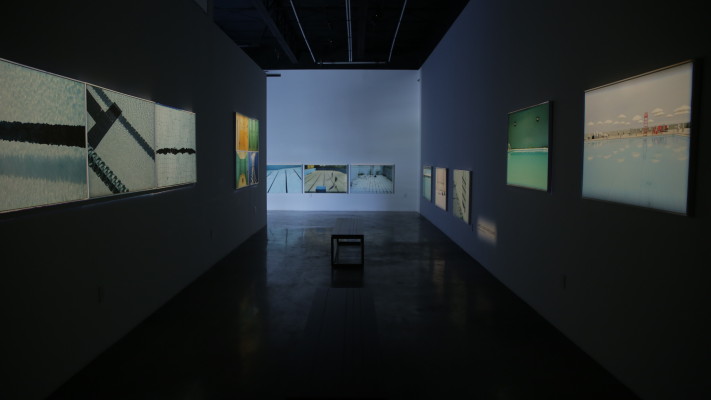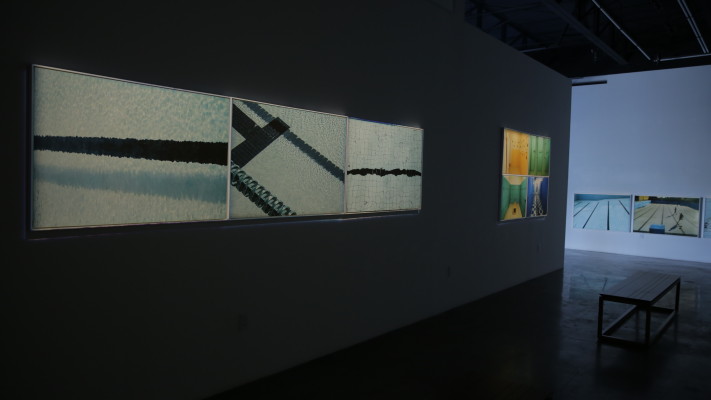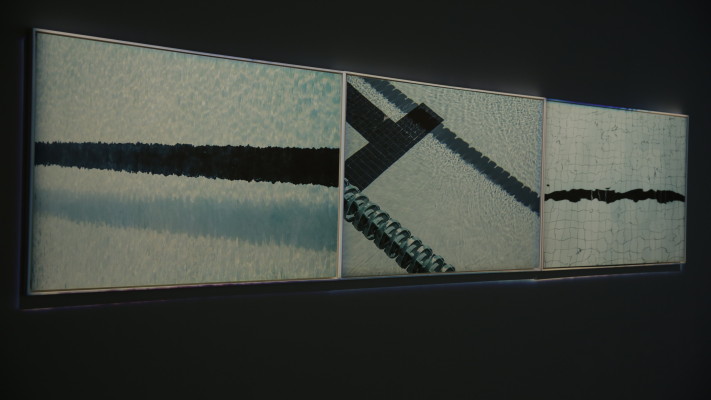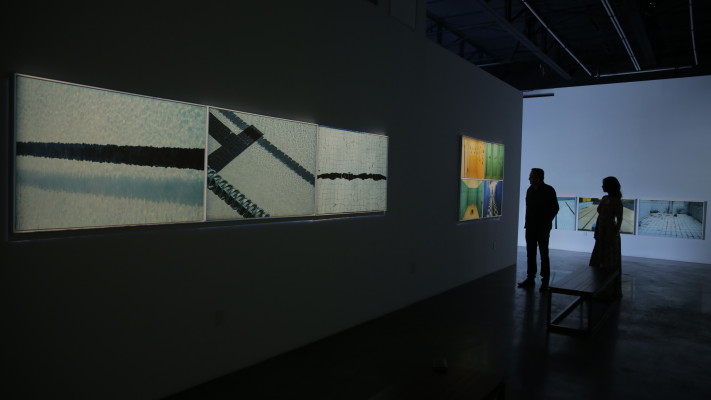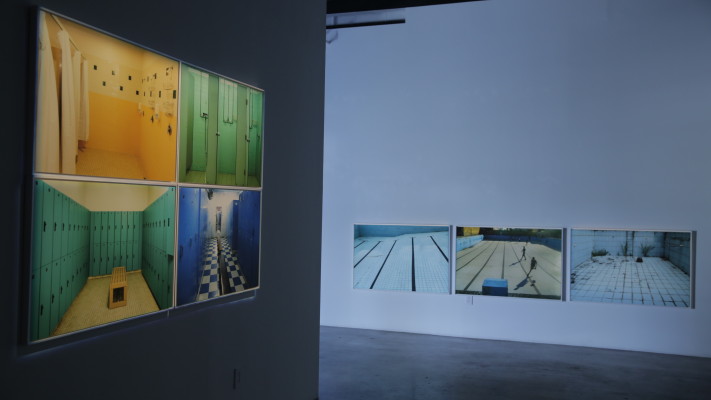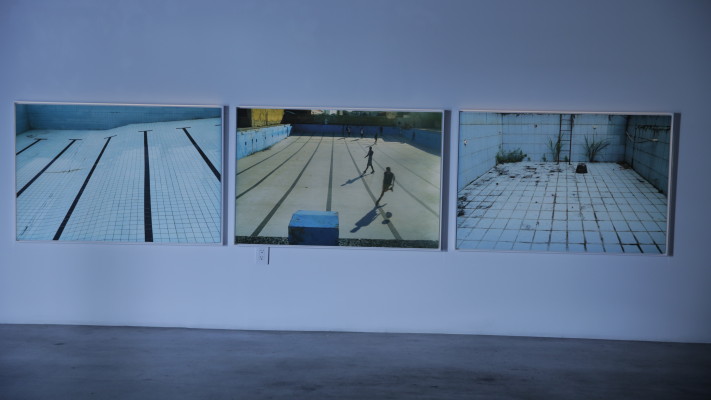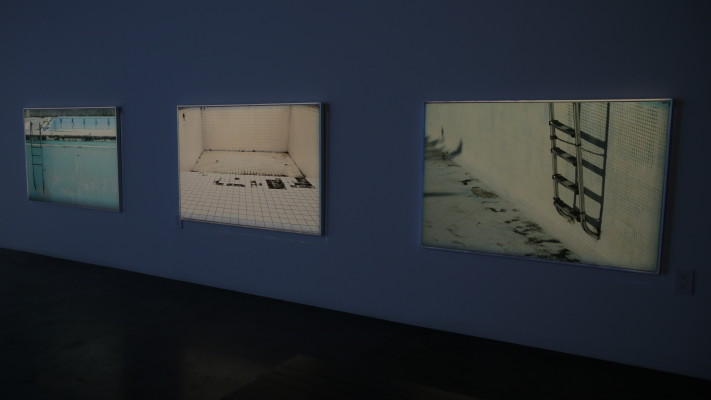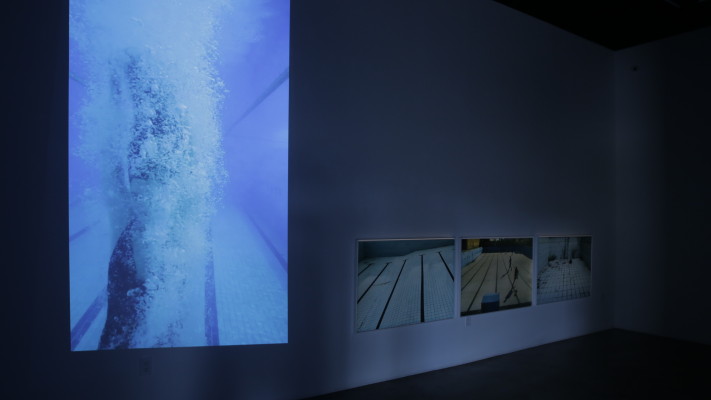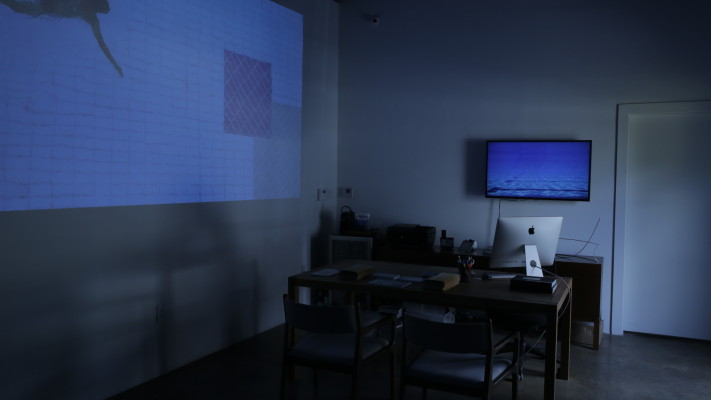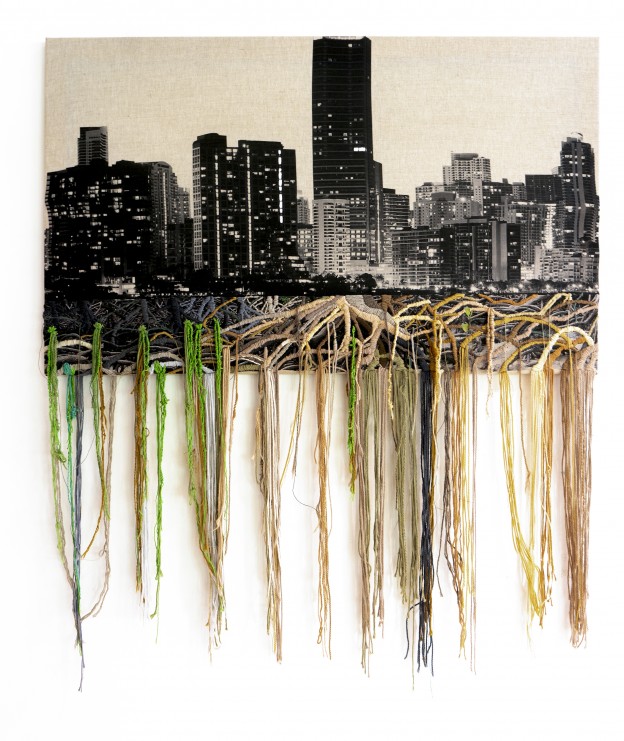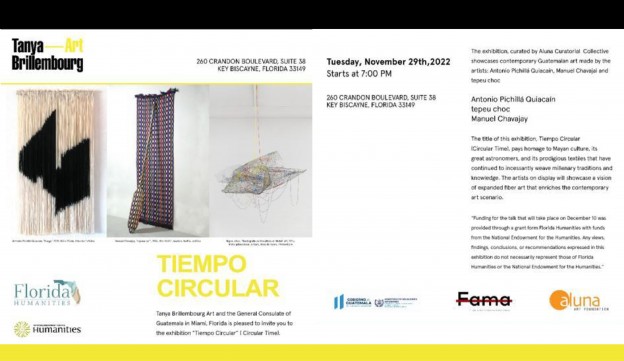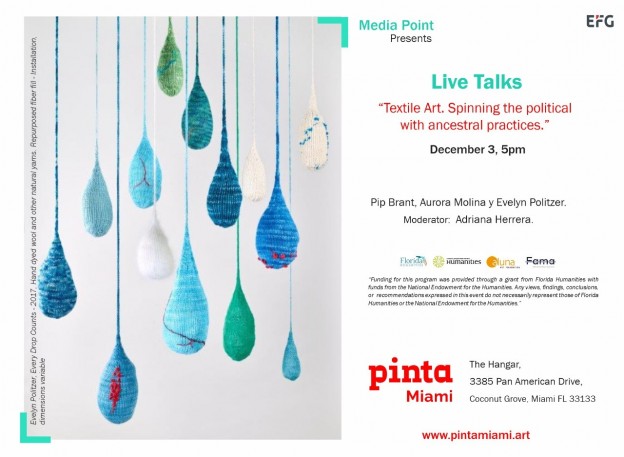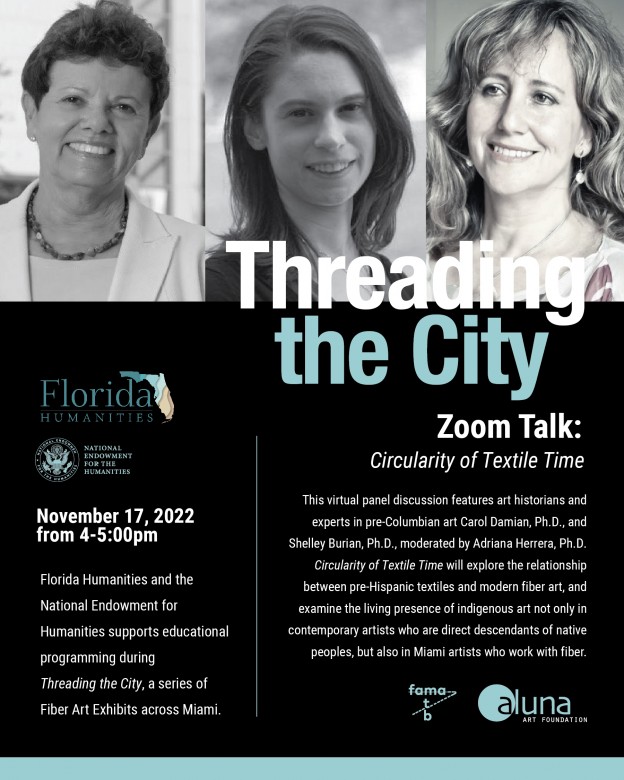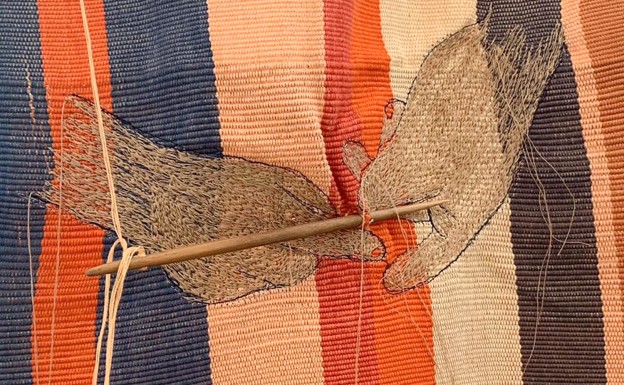PAST EXHIBITION
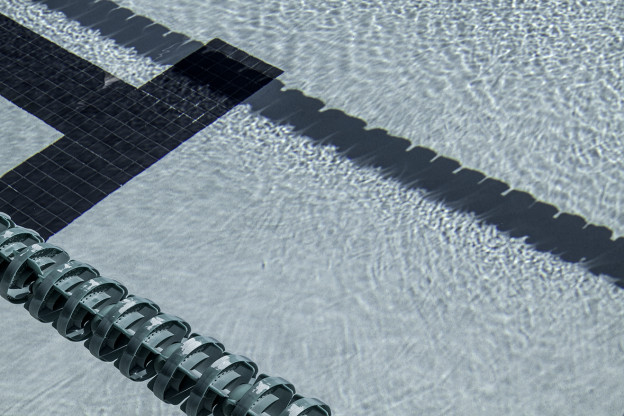
Water Diaries | Maritza Caneca
Water Diaries by Maritza Caneca at Clima Gallery
Water, the origin of life, has, from the most remote cosmogonies, symbolized the energy of the unconscious and the creative force, as well as a purifying or healing element. But water is also by excellence, the metaphor of time that flows without stopping. The work of Maritza Caneca (Brazil, 1964) presented by Clima Gallery, links what Gastón Bachelard calls “images of form”, with “direct images of matter”. Her works allow us to confirm that, as the philosopher argued, “the material imagination of water is a particular type of imagination (…) we do not bathe twice in the same river because already into its depth, the human being has the destiny of water that runs”. We are “beings in vertigo”. The well-known sentence of Heraclitus, which refers us to the impossibility of stopping the course of the hours, can be adapted to swimming pools, a name that comes from the Greek word “piscis”, fish, and which also had a curative use since antiquity. At the same time, the notions of immersion and delight, transformation or meditation correlated with water traverse the history of diverse cultures and art of all times, and are essential in the works of Martiza Caneca whose aesthetics of liquidity― also captured in aquariums and seas or oil ― flows between states of time, between chaos and order, between the biographical and the archetypal.
Caneca started the Swimming Pool Series in 2012 after a visit to the hacienda of her paternal grandparents where she spent her childhood vacations and the pool was the epicenter of crowed family lunches and the space of delight and games. Upon returning, three and a half decades after those weekends with its atmosphere of splendor, she was impressed to see “the state of the house, and the pool completely empty and abandoned”, with plants that have another life, the return to nature of the space where her eyes as a girl perceived the images of prosperity. “In that pool that was a place of joy, glamor, encounters, there were only residues and memories … I realized that this void was filled with memories. And how strong they were! “This perception of space vacuum and the concurrence of memories was so strong that she began to research in Brazil the existence of old houses abandoned by the heirs of ancient patriarchs or matriarchs. “The first thing that was left to attend, were the pools, which paradoxically had been the reflection of the power of previous generations.” Little by little she became “the woman artist of the pools”.
But far from reaching a typology of swimming pools, her camera has been transformed into a subjective device to capture memories in the water (or in its absence, in the spaces that should receive it) through the transit that takes it from one city to another. The Series of Pools (full and empty) with which she has begun to insert herself in contemporary art, is an ongoing work that she has developed in pools captured as scenarios― like the School of Düsseldorf or “the Becher class”― in which the presence of people is not necessary to be able to contemplate the conjunction between the intimate and the collective that floats on the surface of the water or that pervades the sediment of its soils, when they are empty. Unavoidably, the pools end up functioning as a cornerstone of a well where you can see your own memories but also as a social mirror of the cities.
She has photographed full and empty pools in Rio de Janeiro, in Sao Paulo, in Istanbul and Havana, in Jerusalem and Cartagena, in Geneva, Miami, New York, San Francisco, Los Angeles, San Francisco, Marfa, New Orleans, Boston, Lisbon, Porto, Hanoi, Bangkok and Cambodia, and each photograph can be read as an image of a visual diary. Not by chance, in another parallel series, she has explored the images of unfolded sheets in beds of different cities of the world. The trail of everyday life in swimming pools is as present as their own mobility from one place to another.
In September 2014, she visited Cuba with the idea of photographing the island’s swimming pools and found that they had been emptied. It was not just because they were signs of the old bourgeois splendor, but because it was expensive to keep them. But they were not abandoned architectures but adapted as new spaces for play. On the island, she exceptionally photographed the pools in the sunlight, since she usually waits on cloudy days to create atmospheres with a diffuse light.
Water is the element where Caneca captures calligraphies of the moment, a “writing” of liquid forms in conjunction not only with the light of a precise hour, but with the memories of the games in the water, evanescent as the flow of the days. For three long decades this female director of photography who six years ago turned to the world of art as an author, studied the lessons of the light of Vermeer, Rembrandt and Caravaggio, as well as the everyday spaces of Edward Hopper. In her Water Diaries there are also dialogues with the light that bathes the world in the pools of Los Angeles painted by David Hockney, but her photographs and videos almost never contain human presences and if they appear they are swimmers caught under the surface, with the delight of being submerged in the primordial element. Her approach is also much more focused on the formal languages of water and the structures and elements of the pools than photographic works that preceded her, such as Nine Swimming Pools (and a Broken Glass) by Edward Ruscha, who not only capture the atmosphere of a time in a place but also introduced conceptual elements such as the allusion to what lurks in the midst of the apparent placidity.
If the empty pools speak of chaos, in the crowded pools, captured with the splendor of the forms, appear an order that promises to last. The illusion of its perfect moment works on several levels: the exterior view can contain objects of the cultural system to which they belong, reinforced by the titles of the works that make the locations explicit and by the parallel photographs of adjoining architectures of bathrooms and dressing rooms, which Caneca captures enhancing its formal qualities, as geometric spaces. In parallel, the surfaces of the swimming pools leave unexpected geometries conformed by water and the elements used as signs, divisions or accessories such as stairs. In certain cases, full pools suggest the invitation to the experience of immersion.
Caneca also remembers the physical sensation of submerging herself to the bottom of the pool and discovering the possession of a moment of her own, where the world was silenced and only her body and water seemed to exist in the universe. The ascent meant returning to the noise of the world: “I quickly returned to the bottom, to the silence, so similar to the maternal womb or to the sensation of being floating in nothingness”. A way of meditation. That is the origin of the video that she titled Immersion and filmed in slow motion, capturing the sensation of fullness of sinking into the water as one who releases the anchor of the world. Some of her artworks not only provide the evocation of memories but the ultimate invitation to immerse oneself in the gift of silence.
In 2017, at the Copacabana Palace Hotel in Sao Paulo, she used five projectors pointing towards the floor of the famous pool to project the image of three swimmers passing through a tunnel similar to the blue of the pool and the swimmers cut in paper by Matisse with a joy who accompanied him to the end. Maritza Caneca covered the blue walls and ceiling of the space and titled the work Immersion in the blue.
In the video Oração, filmed with images of dark oil -this thick, black water- extracted in the ocean, the tones change to yellows, reds, ochres, but again the aesthetics of liquidity transfer the emotion of a dive, beyond of time and space, in mystery.
Diarios del agua de Maritza Caneca en Clima Gallery
El agua, origen de la vida, ha simbolizado desde las más remotas cosmogonías, la energía del inconsciente y la fuerza creativa, tanto como un elemento purificador o sanador. Pero el agua es también por excelencia la metáfora del tiempo que fluye sin detenerse. El trabajo de Maritza Caneca (Brasil, 1964), presentado por Clima Gallery, enlaza lo que Gastón Bachelard llama las “imágenes de la forma”, con las “imágenes directas de la materia”. Sus obras nos permiten constatar que ciertamente, como el filósofo sostenía, “la imaginación material del agua es un tipo particular de imaginación (…) No nos bañamos dos veces en el mismo río porque ya en su profundidad, el ser humano tiene el destino del agua que corre”. Somos “seres en vértigo”.
La conocida sentencia de Heráclito —que nos remite a la imposibilidad de detener el curso de las horas—, puede adaptarse a las piscinas, nombre que viene del griego piscis, pez, que también tuvieron desde la antigüedad un uso curativo. Igualmente, las nociones de inmersión y deleite, transformación o meditación correlacionadas con el agua atraviesan la historia de las diversas culturas y el arte de todos los tiempos, y están presentes en la obra de Martiza Caneca cuya estética de la líquidez –también captada en acuarios y mares o en el petróleo- fluye entre estados de tiempo, entre el caos y el orden, entre lo biográfico y lo arquetípico.
Caneca inició la Serie de Piscinas en 2012 tras una visita a la hacienda de sus abuelos paternos donde pasaba las vacaciones de su infancia y la piscina era el epicentro de concurridos almuerzos familiares y el espacio del deleite y los juegos. Al regresar, tres décadas y media después de esos fines de semana con su atmósfera de esplendor, le impresionó ver “el estado de la casa, y la piscina completamente vacía y abandonada”, con plantas que deban otra vida, la del retorno a la naturaleza, al espacio donde sus ojos de niña percibían las imágenes de la prosperidad. “En esa piscina que era un lugar de alegría, glamour, encuentros, sólo quedaban residuos y memorias… Me di cuenta de que ese vacío se llenaba de recuerdos. ¡Y cuánta fuerza tenían!”.
Esa percepción del vacío espacial y la concurrencia de memorias fue tan fuerte que empezó a investigar en Brasil la existencia de antiguas casas abandonadas por los herederos de antiguos patriarcas o matriarcas. “Lo primero que se dejaba de atender, eran las piscinas, que paradójicamente habían sido el reflejo del poder de las generaciones previas”. Poco a poco se convirtió en “la artista de las piscinas”.
Pero lejos de llegar a una tipología de las piscinas, su cámara se ha ido transformando en un dispositivo subjetivo de captar memorias en el agua (o en su ausencia en los espacios que deberían recibirla) a través del tránsito que la lleva de una ciudad a otra. La Serie de las Piscinas (llenas y vacías) con la cual ha comenzado a insertarse en el arte contemporáneo, es una obra en curso que ha desarrollado en piscinas captadas como escenarios ―al modo de la Escuela de Düselldorf o de “la clase Becher”― en los cuales no es necesaria la presencia de personas para poder contemplar la conjunción entre lo íntimo y lo colectivo que flota en la superficie del agua o que inunda el sedimento de sus suelos, cuando están vacías. Inevitablemente, las piscinas acaban por funcionar como brocal de un pozo donde se miran los propios recuerdos pero también como espejo social de las ciudades.
Ha fotografiado piscinas llenas y vacías en Río de Janeiro, en Sao Paulo, en Estambul y la Habana, en Jerusalén y Cartagena, en Ginebra, Miami, Nueva York, San Francisco, Los Ángeles, San Francisco, Marfa, Nueva Orleans, Boston, Lisboa, Porto, Hanoi, Banbkok y Camboya, y cada fotografía puede leerse como una imagen de un diario visual. No por azar, en otra serie paralela, ha explorado las imágenes de las sábanas destendidas en camas de diversas ciudades del mundo. El rastro de modos de vida cotidiana en las piscinas está tan presente como su propia movilidad de uno a otro lugar.
En septiembre de 2014 visitó Cuba con la idea de fotografiar las piscinas de la isla y se encontró con que las habían mandado vaciar. No era sólo porque fueran signos del antiguo esplendor burgués, sino porque costaba mantenerlas. Pero no eran arquitecturas abandonadas sino adaptadas como nuevos espacios de juego. En la isla, excepcionalmente fotografió las piscinas a la luz del sol, pues suele esperar los días nublados para crear atmósferas con una luz difusa.
El agua es el elemento en donde Caneca captura caligrafías del instante, una “escritura” de formas líquidas en conjunción no sólo con la luz de una hora precisa, sino con las memorias de los juegos en el agua, evanescentes como el fluir de los días. Durante tres largas décadas esta directora de fotografía que hace seis años se volcó al mundo del arte como autora, estudió las lecciones de la luz de Vermeer, de Rembrandt y Caravaggio, tanto como los espacios cotidianos de Edward Hopper. Es sus Diarios del agua también hay diálogos con la luz que baña el mundo en las piscinas de Los Ángeles pintadas por David Hockney, pero sus fotografías y videos no contienen casi nunca presencias humanas y si aparecen son nadadores captados bajo la superficie, con el deleite del ser sumergido en el elemento primigéneo. Su enfoque es igualmente mucho más concentrado en los lenguajes formales del agua y las estructuras y elementos de las piscinas que obras fotográficas que le antecedieron como Nine Swimming Pools (and a Broken Glass), de Edward Ruscha, quien no sólo captura la atmósfera de una época en un lugar sino contiene elementos conceptuales como la alusión a lo que acecha en medio de la aparente placidez.
Si las piscinas vacías hablan del caos, en las piscinas llenas, fotografiadas en el esplendor de las formas, reina un orden que promete perdurar. La ilusión del instante perfecto funciona en varios niveles: la vista exterior puede contener objetos del sistema cultural al cual pertenecen, reforzados por los títulos de las obras que explicitan las locaciones y por las fotografías paralelas de arquitecturas contiguas de baños y vestieres que Caneca retrata enfatizando la geometría de sus formas; paralelamente, las superficies de las piscinas deparan inesperadas geometrías conformadas por el agua y los aditamentos usados como signos, divisiones o accesoriaos como las escaleras. En otros casos, las piscinas llenas invitan a la experiencia de la inmersión.
Caneca recuerda también la sensación física del sumergirse hasta el fondo de la piscina y descubrirse en posesión de un momento solo suyo, donde el mundo se silenciaba y sólo parecian existir su cuerpo y el agua en el universo. El ascenso significaba regresar al ruido del mundo: “Rápidamente volvía hacia el fondo, hacia el silencio, tan semejante al del útero materno o a la sensación del ser flotando en la nada”. Ese es el origen del video que titula justamente Inmerssion y que filmó en cámara lenta, capturando la sensación de plenitud de hundirse en el agua como quien suelta el ancla del mundo. Algunos trabajos suyos no sólo deparan la evocación de memorias sino la invitación última a sumergirse en el don del silencio.
En 2017, en el Hotel Copacabana Palace de Sao Paulo, utilizó cinco proyectores apuntando hacia el suelo de la famosa piscina para proyectar la imagen de tres nadadores atravesando un tunel semejante al azul de la piscina y de los nadadores recortados en papel por Mattisse con un gozo que lo acompañó hasta el fin. Maritza Caneca cubrió de azul paredes y techo del espacio y tituló la obra Inmersión en el azul. En el video Oração, filmado con imágenes de oscuro petróleo ―esa agua espesa y negra― extraído en el océano, los tonos cambian a amarillos, rojos, ocres, pero de nuevo la estética de la liquidez transfiere la emoción de una inmersión, más allá del tiempo y el espacio, en el misterio.



